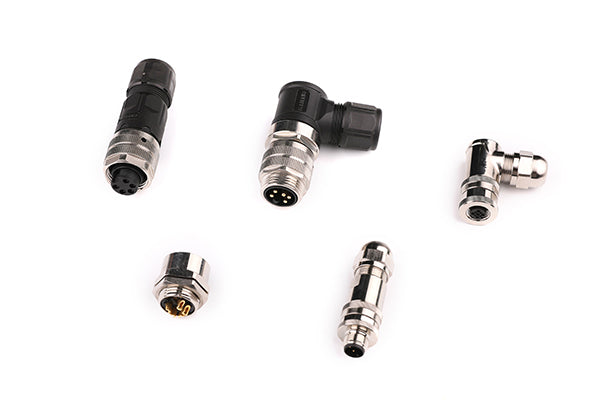Electrical connector
Electrical connector
Electrical Connector: A Brief Introduction
An electrical connector is an electro-mechanical device used to create an electrical circuit by joining electrical terminations, thereby enabling the removable interface between two points in an electrical system. They are fundamental components in virtually every piece of modern technology, providing a critical pathway for power and signal transmission.
Primary Purpose and Key Functions:
The core function of a connector is to provide a separable connection between two subsystems. This serves several vital purposes:
-
Facilitate Assembly and Manufacturing: Allows for the modular construction of complex systems (like vehicles or computers), where sub-assemblies can be built separately and connected quickly and easily on a production line.
-
Enable Serviceability and Maintenance: Permits easy installation, replacement, upgrade, and repair of components without the need for soldering or cutting wires, reducing downtime and cost.
-
Provide Design Flexibility: Offers engineers the ability to configure and customize systems from a standardized set of components.
Critical Components and Design Features:
A typical connector consists of two main parts: a plug (male) and a socket (receptacle/female). The key components include:
-
Contacts (Terminals/Pins and Sockets): The heart of the connector. These are the conductive components that actually make the electrical connection. They are typically made from copper alloys and plated with materials like gold (for high reliability/signals), tin, or silver (for high current) to ensure low resistance and prevent corrosion.
-
Housing (Shell): The insulating structure, usually made of plastic or metal, that holds the contacts in place. It provides:
-
Polarization/Keying: Physical features that ensure the connector can only be mated in the correct orientation.
-
Protection: Shields the contacts from physical damage and short circuits.
-
Environmental Sealing: In many designs, the housing incorporates seals to protect against moisture, dust, and chemicals.
-
-
Termination Method: The way the connector attaches to the wire or PCB.
-
Crimping: A metal contact is mechanically compressed onto a wire.
-
Soldering: Wires or PCB pins are soldered to the contact.
-
Insulation Displacement Connection (IDC): A wire is pressed into a sharp metal slot that pierces the insulation to make contact.
-
Press-Fit: Contacts are pressed into plated through-holes in a PCB.
-
-
Locking Mechanism: A crucial feature to prevent accidental disconnection due to vibration or shock. Types include latches, levers, screws (threaded couplings), and push-pull mechanisms.
Classification and Common Types:
Connectors can be categorized in numerous ways, leading to a vast array of types:
-
By Application:
-
Board-to-Board: Connect two printed circuit boards (PCBs) together.
-
Wire-to-Wire: Connect two wire-ended cables.
-
Wire-to-Board: Connect a cable to a PCB.
-
-
By Form Factor:
-
Circular Connectors: Characterized by a cylindrical housing and a threaded coupling ring. Renowned for durability and environmental sealing (e.g., M12, MIL-SPEC types). Common in industrial, aerospace, and automotive applications.
-
Rectangular Connectors: Feature a block-like shape (e.g., D-Sub, USB, HDMI). Common in data transmission and computer peripherals.
-
Coaxial (RF) Connectors: Designed for transmitting radio frequency signals with specific impedance control (e.g., FAKRA in automotive, SMA, BNC).
-
PCB Headers and Sockets: Simple pin headers and their mating sockets on circuit boards.
-
-
By Specialization:
-
High-Voltage Connectors: For electric vehicles and industrial equipment.
-
High-Speed Data Connectors: Designed to minimize signal loss and crosstalk (e.g., Ethernet, USB, SATA).
-
Sealed Connectors: Designed with gaskets and seals to achieve high IP (Ingress Protection) ratings for harsh environments.
-
Importance of Performance Characteristics:
When selected, connectors are evaluated against key criteria:
-
Current Rating: The maximum current a contact can carry without overheating.
-
Voltage Rating: The maximum operating voltage.
-
Contact Resistance: The electrical resistance of the mated contact interface; a low, stable value is critical.
-
Durability (Mating Cycles): The number of connect/disconnect cycles the connector is designed to withstand before performance degrades.
-
Environmental Resistance: Ability to operate under specified conditions of temperature, humidity, vibration, and chemical exposure.
無法載入取貨服務供應情況
有庫存
查看完整資訊
